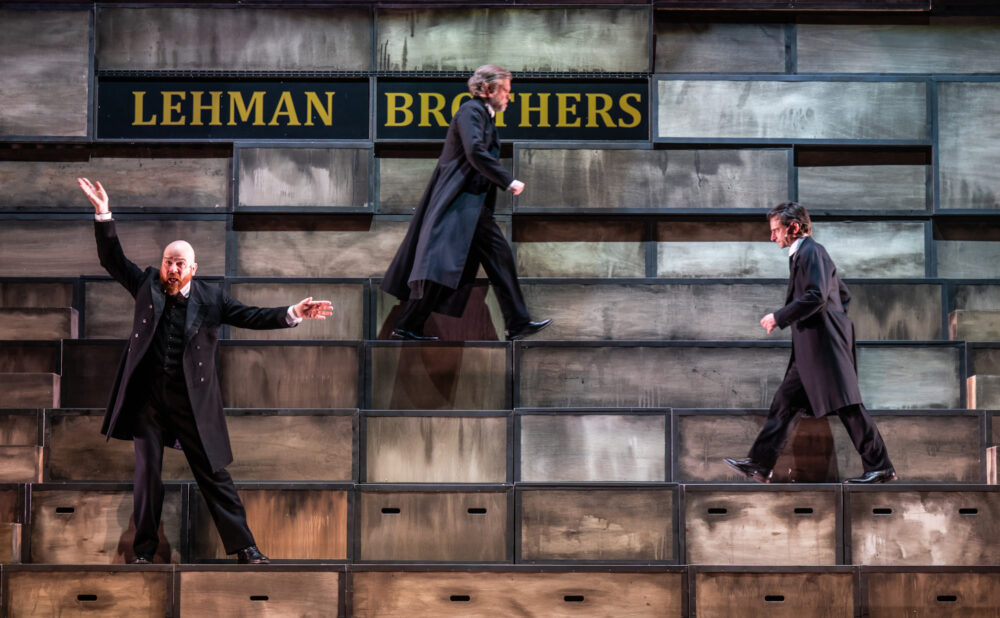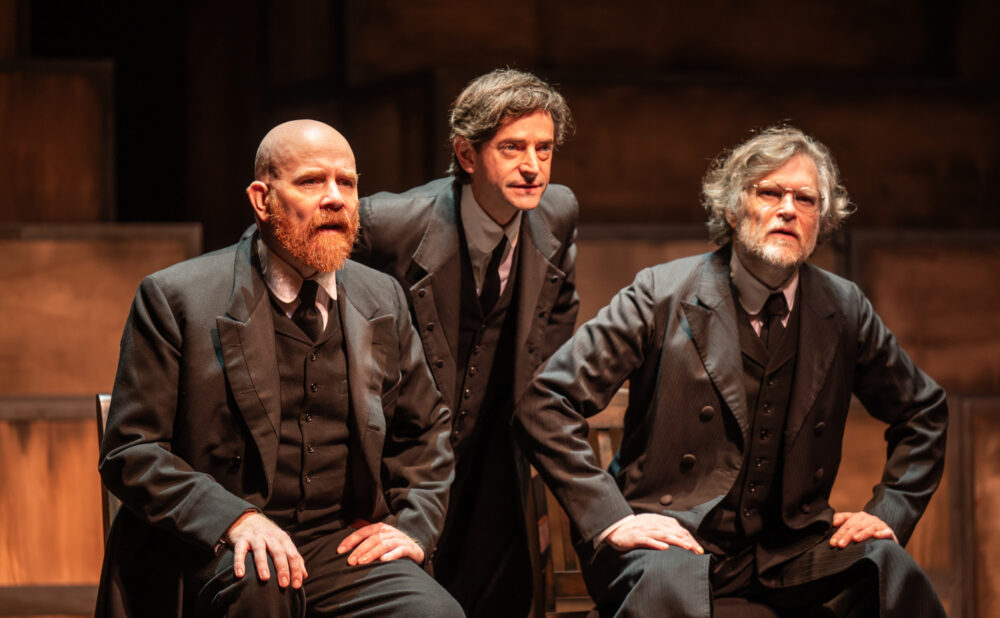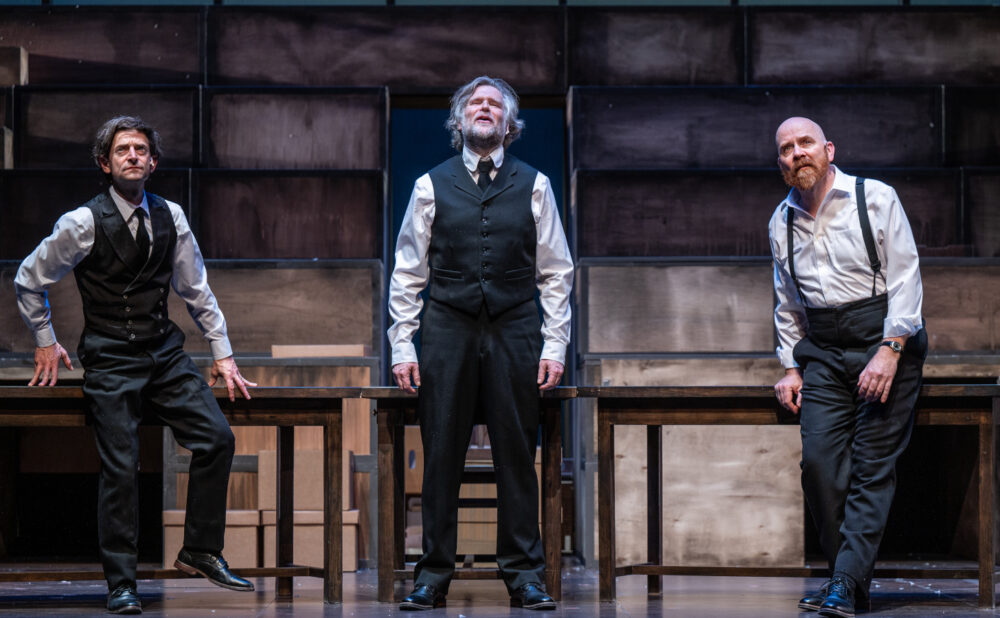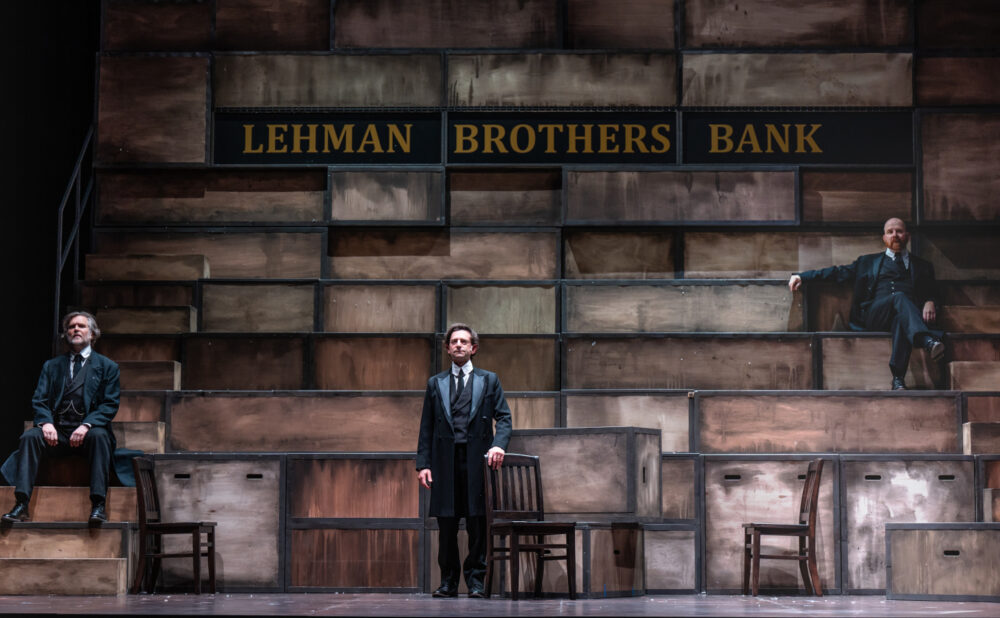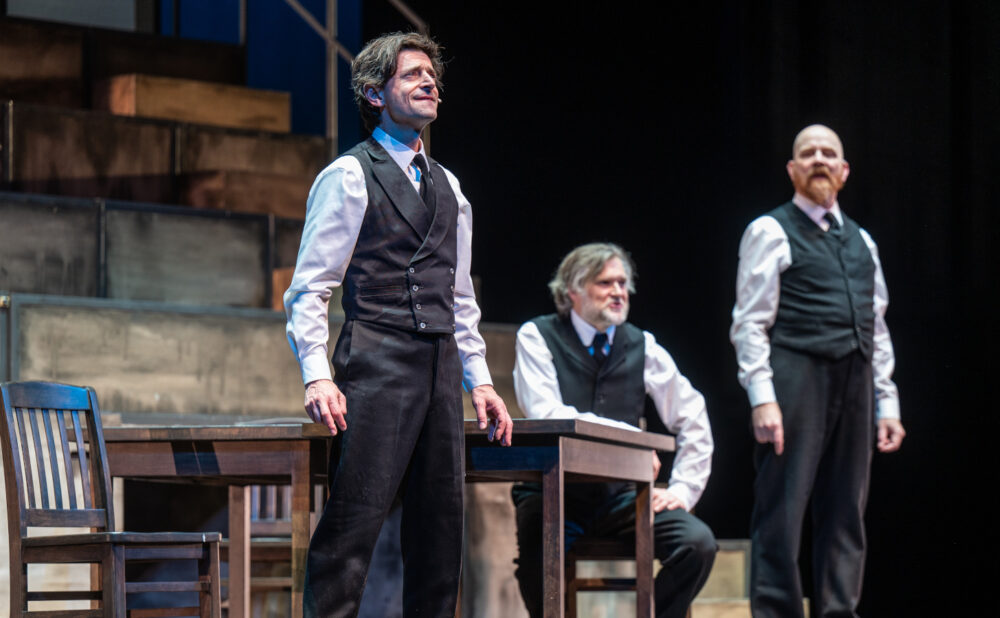Review: How does Canadian Stage’s ‘The Lehman Trilogy’ exist?
Three-act epic about historic Wall Street empire is addicting, awe-inspiring
What: The Lehman Trilogy
Where: Bluma Appel Theatre, 27 Front St. E.
When: Now, until Sat., Dec. 2
Highlight: Philip Akin’s dynamic direction
Rating: NNNN (out of 5)
Why you should go: The show’s thrills come from watching highly experienced performers do what feels impossible.
IT’S ALMOST UNBELIEVABLE that The Lehman Trilogy exists.
Canadian Stage’s new production of Italian playwright Stefano Massini’s Tony-winning epic, adapted by Ben Power from Mirella Cheeseman’s English translation, might be the best thing to play the cavernous Bluma Appel Theatre since the pandemic. Despite a three-hour-20-minute runtime (including two intermissions), director Philip Akin imbues the show with the addicting pacing of a good blockbuster. But it’s also delightfully and provocatively strange.
The conceit: three actors (Ben Carlson, Jordan Pettle and Graeme Somerville) combine to play more than 50 characters in a speedy history of the Lehman Brothers, an investment bank that was the fourth largest in the United States before it filed for bankruptcy in 2008. The tale spans nearly 170 years of history, tracing the family’s journey from fabric sellers to cotton merchants to Wall Street titans.
Many of the show’s thrills come from watching highly experienced performers do what feels impossible. They’re like magicians with an endless supply of rabbits. This parallels the Lehmans’ continued success as they bet correctly, over and over, on the next hot commodity — cotton, then railways, then tobacco, then radio and so forth.
Camellia Koo’s towering set, a giant staircase for the actors to climb up and down, heightens this sense of play by adding an exciting athletic dimension to the proceedings. And though it’s largely an abstract piece of scenery, it comes with magic tricks of its own — a set of panels, flaps and other mechanisms mean the playing space is constantly evolving.
The Lehman Trilogy is a lot of fun. But through a powerful scenic element that draws attention to the violence the family’s empire is built on, Akin questions that fun: why does watching exploitative bankers win, win and win again get our collective pulse racing? What is it about these horrible men that grips us so?
Though the production is polished, the small cast and barren set lend the show a makeshift vibe. The performers’ fast-paced navigation of different characters and decades feels as perilous as a tightrope walk across a busy street. This produces the terrifying implication that the Lehman empire is equally fragile — that America is run by people who are only guessing as to what’s coming next.
The Lehman Trilogy is a tad smug. Sometimes, it even seems to be showing off — like it thinks itself brilliant. That’d be something to get annoyed about if it wasn’t so obviously true.

